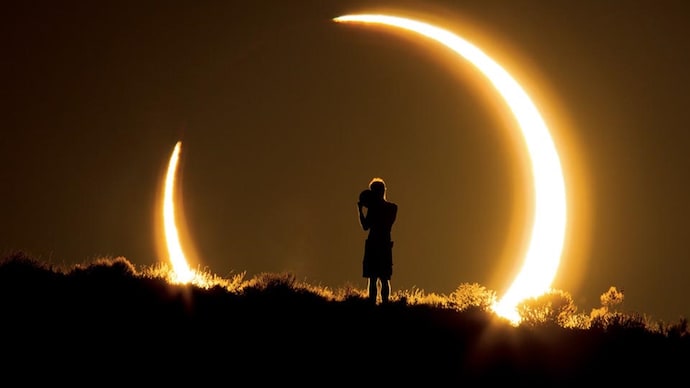A great annular solar eclipse is coming that will cross the skies during the month of October 2023, viewers in America will be able to enjoy an annular solar eclipse.
A bright ring will surround the Moon in broad daylight, leaving the most impressive views of the encounter between the largest body and the Earth’s natural satellite.
The year 2023 will bring us a series of eclipses starting in April with the first hybrid solar eclipse , but if for some reason you can’t enjoy the astronomical event, a second annular solar eclipse awaits us in October.

On October 14, 2023, the Moon will come between the Sun and Earth, almost completely blocking the rays of the Solar System’s host star. The encounter between the Sun and the Moon will cause night and day to merge into one, blackness will gradually cover the celestial vault until only a ring of fire remains surrounding the natural satellite.

At that time the Moon will be almost at its apogee , which means that it will be at its maximum distance from Earth. This factor will visually make the lunar diameter smaller than the solar one from the terrestrial perspective, causing what is known as an annular eclipse, which is characterized by leaving a ring of light around the Moon.
Where will October’s annular solar eclipse be visible?
The path of the annular solar eclipse will begin in the Pacific Ocean, covering the Oregon coast in the United States, then it will reach the southeast in the states of Nevada and Texas . Later it will cross the Gulf of Mexico and the Yucatan Peninsula in Mexico, as well as most of Central America.
Finally the astronomical event can be seen in the skies of Colombia and Brazil in South America. The trajectory pursued by the annular solar eclipse will be a curvature described in the image below in orange. The closer your geographic position is to the annular path, the better you will be able to see the Moon eclipsing the larger body. A partial eclipse can also be seen in Venezuela, Ecuador , Peru , and northern Bolivia and Chile.

If you are outside the path of the eclipse, you can follow the event through various online streaming that NASA or other astronomical projects make available to the public. Also, if you have doubts about whether it will be visible in your position or not, you can consult the interactive map developed by Eclipse Wise , where it shows the path of the eclipse, as well as the time and what you will observe in the sky (if an annular or partial eclipse ), just by positioning the pointer anywhere on the map.
Remember that the golden rule to admire these beautiful astronomical phenomena is to protect your eyes with a suitable filter. The sun’s rays are extremely powerful and more so when it comes to solar eclipses, so they should not be seen directly or else you could suffer serious consequences for your eyesight.
Source: amazingastronomy.thespaceacademy.org








